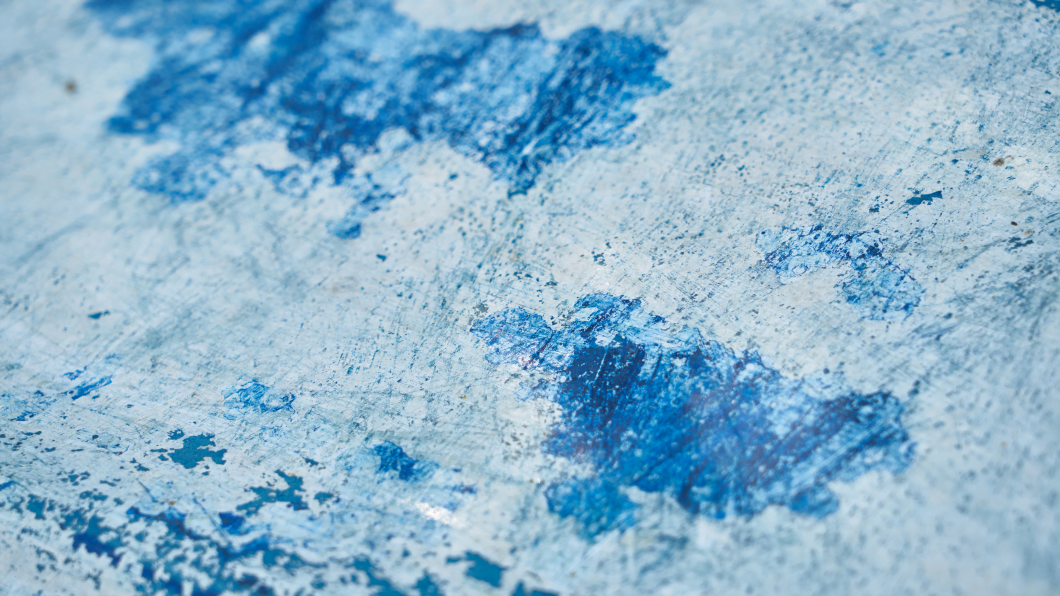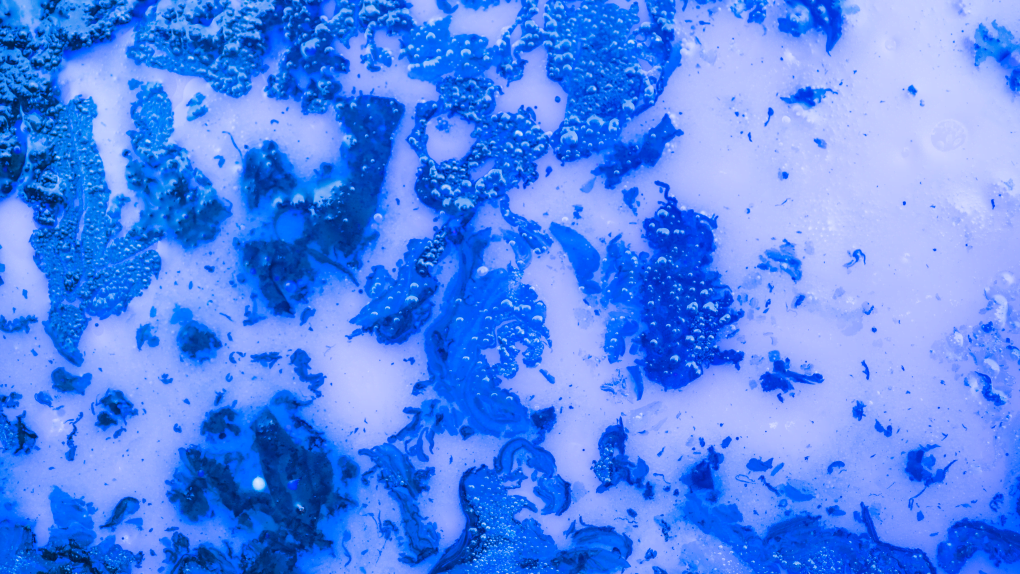
Methylene Blue is a versatile dye commonly used in various applications such as staining biological tissues, diagnostic tests, and medication. However, this dye can also be a nuisance when staining clothes. When methylene blue gets on your clothes, you must remove it immediately before it impairs or damages your clothing. The longer the dye sits on the fabric, the harder it will be to remove. In this article, we will explore what Methylene Blue is, why it stains clothes, and most importantly, how to get Methylene Blue out of clothes effectively.
Essential Methods on How to Get Methylene Blue Out of Clothes
1. Using Household Items
When removing Methylene Blue stains from clothes, you can use common household items that may already be available. One method is to create a cleaning solution using a mixture of liquid dish soap and warm water. Gently blot the stain with the solution and rinse with cold water. Repeat the process until the stain is diminished or completely removed.
2. Using Commercial Stain Removers
If household remedies do not yield satisfactory results, you can use commercial stain removers specifically designed for dye-based stains, such as Methylene Blue. These stain removers contain specialized enzymes or chemicals that aid in breaking down the dye molecules and lifting them from the fabric. Follow the instructions provided on the product label for the best results.
Steps to Remove Methylene Blue Stains from Different Types of Fabrics
Removing Methylene Blue from Cotton Clothes
Cotton fabrics can absorb Methylene Blue stains deeply, making them challenging to remove. Start by treating the stain as soon as possible. Gently blot the stain with a clean cloth to remove any excess dye, then soak the stained area in a mixture of water, and a bleach alternative formulated explicitly for removing stains. After soaking for a few minutes, launder the garment, as usual, using a detergent that is safe for colored fabrics. Check the stain before drying the garment, and repeat the process if necessary.
Removing Methylene Blue from Synthetic Fabrics
Synthetic fabrics like polyester or nylon are usually more resistant to stains than natural fibers. However, it is still important to treat the stains promptly. Start by rinsing the stained area under cold water to remove any excess dye. Then, follow the instructions and apply a stain remover specifically designed for synthetic fabrics. Launder the garment as usual, and check if the stain is completely removed before drying.
Removing Methylene Blue from Wool or Delicate Fabrics
Wool and other delicate fabrics require extra care when removing Methylene Blue stains. It is recommended to seek professional cleaning services for these fabrics to avoid damage. If you prefer drawing the stain at home, use a mild detergent suitable for delicate fabrics. Gently dab the stained area with the detergent solution and rinse thoroughly. If the stain persists, repeat the process or seek professional assistance.
6 Effective Methods to Get Methylene Blue Out of Clothes

1. Use Hydrogen Peroxide
Hydrogen peroxide is a great way to eliminate methylene blue in your clothing. It’s an oxidizing agent that breaks down the dye molecules to remove them from the fabric. This method works best on white or light-colored fabrics because it may bleach the color out of darker colors if left for too long.
Here are the steps on how to remove methylene blue in your clothing:
- Blot the stained area gently using a clean cloth or paper towel. This will help absorb as much of the dye as possible.
- Pour a small amount of hydrogen peroxide directly onto the stained area. Ensure that the hydrogen peroxide covers the entire stain.
- Gently massage the stained area with your fingers or using a soft brush. This will help the hydrogen peroxide penetrate the fabric fibers and break down the dye.
- Rinse the fabric under cold running water to remove the hydrogen peroxide and any loosened dye. Continue rinsing until the water runs clear.
- After rinsing, check if the stain is still present. Repeat steps 3-5 if it persists until the stain is completely gone.
- Once the stain is removed, launder the garment as you normally would, following the instructions on the care label.
It’s always a good idea to test the hydrogen peroxide on a small inconspicuous area of the fabric first to ensure it doesn’t cause discoloration or damage. Also, if the fabric is delicate or requires special care, it may be best to take it to a professional cleaner.
2. Use Rubbing Alcohol
In case you accidentally spill methylene blue on your clothes or if your clothes are contaminated with methylene blue, you can use rubbing alcohol to remove the stain from them. Here are the ways to do this method:
- Soak the stained area of the garment in warm water for about 30 minutes. This will help remove any surface residue from your clothes so you can work on it better with rubbing alcohol.
- Take a clean cloth and put some rubbing alcohol on it.
- Rub the stained area of your clothes with this cloth until all traces of methylene blue are removed.
- Wash the garment after all traces of methylene blue have been removed, using cool water and mild detergent if necessary.
3. Use Shaving Cream
Shaving cream contains cleaning agents that can help break down and remove stains. It is effective on many types of stains, including Methylene Blue. Here are the steps to remove methylene blue stains from your clothing:
- Blot the stained area gently with a clean cloth or paper towel to remove any excess dye. Be careful not to rub the stain, as it may spread.
- Apply a generous amount of shaving cream directly onto the stained area. Ensure that the entire stain is covered with shaving cream.
- Gently rub the shaving cream into the fabric using your fingers or a soft brush. This helps to work the cleaning agents into the stain.
- Let the shaving cream sit on the stain for approximately 15-20 minutes.
Rinse the stained area with cold water, thoroughly removing all the shaving cream. - Check the stain. Repeat the process or move on to an alternative method if it persists.
4. Use Bleach
Bleach is the most common chemical used to remove stains from clothes. It works by breaking down stains and removing color for various stains, including blood and food. While bleach is a powerful whitening agent that removes tough methylene blue stains, it is essential to use caution as it may discolor or damage certain fabrics. Here are the steps to eliminate Methylene Blue stains from your clothing:
- Before using bleach, check the care label on your clothing to ensure it is safe to use bleach on the fabric.
- Dilute the bleach by mixing 1 part bleach with 5 parts cold water. This helps minimize the chances of discoloration or fabric damage.
- Test the diluted bleach solution on an inconspicuous area of the garment to check for any adverse reactions.
- Apply the diluted bleach directly onto the stained area using a clean cloth or sponge.
Gently rub the bleach into the stain and allow it to sit for approximately 5-10 minutes. - Rinse the stained area thoroughly with cold water to remove all traces of bleach.
- Launder the clothing, as usual, following the care instructions.
5. Use Lemon Juice
Lemon juice is an excellent way to remove methylene blue from fabric because it has bleaching properties. It works by combining with the dye molecules and breaking them down so they can be washed away. Here are ways how to use lemon juice to remove methylene blue from your fabric:
- Squeeze fresh lemon juice onto the stained area, covering it entirely.
- Gently rub the lemon juice into the fabric using your fingers or a soft brush. This helps activate the bleaching properties of the juice.
- Let the lemon juice sit on the stain for approximately 15-20 minutes.
- Rinse the stained area thoroughly with cold water, removing all traces of lemon juice.
- Launder the clothing, as usual, following the care instructions.
Note: It is always advisable to test any stain removal method on a small, inconspicuous area of the fabric before applying it to the entire stain. This helps ensure that the method does not cause any damage or discoloration to the clothing.
6. Professional Cleaning Options
In some instances, particularly for delicate fabrics or stubborn stains, it may be best to seek professional cleaning services. Professional cleaners have access to specialized cleaning equipment and solvents that can effectively remove Methylene Blue stains without causing damage to the fabric. Consult a professional cleaner in your area for guidance on the best action.
How to Get Methylene Blue Off Skin
Methylene blue stains are usually caused by improper handling or storage of the dye. It is recommended that the dye be used as soon as possible after opening. To remove methylene blue from the skin, follow these steps:
- Wash skin with soap and water.
- Rinse with a mild soap such as baby shampoo.
- Use cotton balls to dab ethyl alcohol (ethanol) onto the stain until it is no longer visible. Ethyl alcohol is available at drug stores without a prescription.
- If the stain remains, use 70% isopropyl alcohol (rubbing alcohol) instead of ethyl alcohol to remove it from your skin.
How to Remove Methylene Blue Stain from Toilet Bowl
Methylene blue is a widespread stain remover, but it can leave behind a blue stain on your toilet bowl. This stain can be difficult to remove from the toilet bowl. However, with some persistence and know-how, you can quickly remove methylene blue stains from your toilet. Here are the steps you can take:
- Pour 2 to 3 tablespoons of rubbing alcohol into the bowl and let it sit for 20 minutes to an hour.
- Scrub the area with a toilet brush to loosen the stain.
- Flush the toilet several times to rinse away any residue on the bowl’s surface or in the tank.
How to Clean Methylene Blue from Glassware
The easiest way to clean glassware stained with methylene blue is to let it sit in a solution of 1 part vinegar and 1 part saturated Vitamin C. Vinegar (acetic acid) will help remove color-staining substances, while Vitamin C (ascorbic acid) will help neutralize the acid. Start by filling a glass container with enough vinegar to cover the stained items. Next, add one teaspoon of saturated Vitamin C crystals or powder and stir gently until dissolved. Lastly, soak the stained items for up to 24 hours, then rinse thoroughly with water and air dry.
How to Remove Methylene Blue Stain from Floor
Removing methylene blue stain from your floor requires some basic cleaning supplies and a little time. Here are the steps you must follow to remove the methylene blue stain from your floor:
Step 1: Mix equal parts of all-purpose cleaner, laundry detergent, and warm water in a spray bottle. Mix thoroughly until all ingredients are dissolved.
Step 2: Spray the stained area with the cleaning solution and wait a few minutes for it to soak into the carpet fibers. Remove any excess liquid with a clean sponge or cloth.
Step 3: Blot up any remaining cleaning solution with paper towels or rags until all moisture has been removed from the area being cleaned.
Step 4: Saturate an absorbent pad with rubbing alcohol and rub it over any remaining stains until they disappear entirely from view.
How to Remove Methylene Blue Stain from Aquarium
Methylene Blue stain is a discoloration that occurs when the chemical is left on or near the aquarium’s surface for too long. It can also occur if your water isn’t chlorinated correctly. As soon as you notice the stain, try to remove as much of the methylene blue as possible. Here are some simple steps you can take:
- Before removing the methylene blue stain, turn off all aquarium filters, heaters, and other electrical equipment. This is to prevent the stain from spreading or getting into the gear.
- Place activated carbon inside a filter bag and add it to your aquarium filtration system. Activated carbon helps to absorb and remove chemicals and dyes, including methylene blue, from the water. Let the filtration system run for at least a few hours or overnight.
- After running the activated carbon for a sufficient time, perform a water change in the aquarium. Replace a portion of the water with fresh, clean water. This will help to dilute any remaining methylene blue in the tank.
- If the stain persists, you can use commercial chemical removers designed to remove dye stains from aquarium water. Follow the manufacturer’s instructions carefully, as the dosage may vary depending on the size of your aquarium.
- After removing the methylene blue stain, monitor the water quality closely to ensure it remains stable. Test the water parameters regularly and make any necessary adjustments to keep the aquarium environment healthy for your fish and other inhabitants.
How to Remove Methylene Blue Stain from Plastic
Methylene blue stain is a common side effect of using methylene blue as a dye for plastic. It is often found in plastic toys, plates, and other items colored with this chemical. The stain is caused by the dye leaching out of the plastic into the fabric or skin. The stain can be difficult to remove but can be done with effort and patience.
First, wash the stained item in warm water and detergent to remove grease or dirt. Then, soak the stained area in cold water for 15 minutes. Repeat this process two more times before moving on to step 2.
Afterward, mix one cup of white vinegar with two cups of warm water in a bowl. Lastly, add 1/2 teaspoon of liquid detergent and allow it to sit for 10 minutes before using a clean cloth to gently rub away all traces of methylene blue from your plasticware or plates.
Prevention and Precautions for Methylene Blue Stains

How to Avoid Methylene Blue Stains on Clothes
Methylene Blue is a chemical dye and should be handled with care. Always read and follow the safety guidelines provided by the manufacturer. Avoid contact with skin, eyes, and clothing. If accidental spills or stains occur, clean them immediately using the appropriate stain removal methods discussed in this article.
Additionally, if you work with Methylene Blue in a laboratory setting, take preventive measures such as wearing a lab coat, gloves, and protective eyewear. Avoid wearing your best or favorite clothes when working with this dye to minimize the risk of staining. Additionally, consider using protective barriers, such as plastic coverings or absorbent materials, to prevent spills or accidental contact with fabrics.
Dealing with Accidental Spills and Stains
Accidents happen, and if you are dealing with an accidental spill or stain from Methylene Blue, act quickly. Blot the affected area gently with a clean cloth or paper towel to remove any excess dye. Then, treat the stain using the recommended stain removal methods based on the type of fabric. The faster you address the stain, the better your chances of successfully removing it from your clothes.
Additional Tips and Advice
Using Bleach to Remove Stubborn Methylene Blue Stains
If the Methylene Blue stain proves to be stubborn and resistant to other stain removal methods, you can try using bleach as a last resort. However, exercise caution, as bleach can be harsh and may cause damage to certain fabrics. Dilute the bleach according to the instructions and test it on a small, inconspicuous area of the fabric first. If the fabric tolerates the bleach, apply it to the stained area and rinse thoroughly. Launder the garment as usual and check if the stain is completely removed before drying.
Seeking Expert Advice for Difficult Stain Removal
If you have difficulty removing a Methylene Blue stain from your clothes, don’t hesitate to seek expert advice. Professional cleaners and stain removal experts have extensive knowledge and access to specialized products that effectively tackle even the most stubborn stains. Consult with them for guidance and recommendations tailored to your specific situation.
How to Clean Methylene Blue from Carpet
Carpet stains caused by Methylene Blue can be challenging to remove. Start by blotting the stain with a clean cloth or paper towel to remove any excess dye. Then, use a carpet cleaner specifically designed for removing tough stains. Follow the instructions provided on the product label and treat the stain accordingly. It may be necessary to repeat the process multiple times until the stain is no longer visible.
Frequently Asked Questions
Q: How do I get methylene blue out of clothes?
A: To get methylene blue out of clothes, you can follow the below procedure:
Q: What should I do if methylene blue spills on my carpet?
A: If methylene blue spills on your carpet, you can use the same procedure for clothes. Blot the stain with a clean cloth or paper towel to remove as much of the dye as possible. Then, apply dish soap and warm water mixture to the stain and gently scrub it using a soft brush or sponge. Rinse with clean water and repeat if necessary.
Q: Will methylene blue stain my blue color clothes?
A: Methylene blue is a blue dye, so it may stain clothes that are already blue. It is always a good idea to wear old clothes or a lab coat when working with methylene blue to avoid staining your regular clothes.
Q: How can I remove methylene blue stains from my shirt?
A: If you have a methylene blue stain on your shirt, you can try the same procedure mentioned earlier. Blot the stain with a clean cloth or paper towel, and then apply a mixture of dish soap and warm water to the stain. Gently scrub the stained area with a soft brush or sponge, and rinse with clean water. Repeat these steps if necessary.
Q: Is methylene blue used to stain yeast cells?
A: Methylene blue is widely used in biology labs to stain yeast cells. It helps in observing the viability of yeast cells under a microscope.
Q: How can I reduce the blue color of methylene blue?
A: To reduce the blue color of methylene blue, add a few drops of sodium thiosulfate solution to the dye. This will turn the blue color into a colorless solution.
Q: Why does methylene blue turn blue when exposed to air?
A: Methylene blue is a dye that can react with oxygen in the air. When exposed to air, it undergoes a chemical reaction that causes it to turn blue.
Q: Can methylene blue stain bacteria?
A: Yes, methylene blue is commonly used to stain bacteria in microbiology. It helps in visualizing and identifying bacterial cells under a microscope.
Q: What is the role of eosin in the methylene blue staining procedure?
A: In the methylene blue staining procedure, eosin is used as a counterstain. It helps distinguish different types of cells or tissues by contrasting the stain’s color.
Q: Can I get rid of methylene blue stains if I wash the clothes with laundry detergent?
A: Washing clothes with laundry detergent alone may not remove methylene blue stains altogether. Follow the specific stain removal procedure using dish soap and warm water.
Conclusion
In conclusion, if you find clothes stained with methylene blue, there are effective ways to get rid of the stain. One recommended method is to treat the color as soon as possible. As a recap, start by rinsing the affected area with cold water to remove excess dye. Then, make a solution using a mild detergent and soak the clothing for a few hours. Afterward, rinse it thoroughly and wash it in the washing machine as usual.
Another option is a commercial stain remover designed explicitly for colored stains. These stain removers often work amazingly well in breaking down and removing the dye. Whichever method you choose, follow the instructions carefully for a better experience and to achieve the best results.
By taking immediate action and using appropriate cleaning techniques, you can successfully remove methylene blue stains from your clothes, restoring them to their original condition.
For more valuable information like this, join our community at the Family Hint today!





1 comment
Since you seem very familiar with methylene blue- I would be interested to know your experience with it. Also how do you take it? I am finding it quite bitter and want to know if there is a better way of taking it.
Comments are closed.